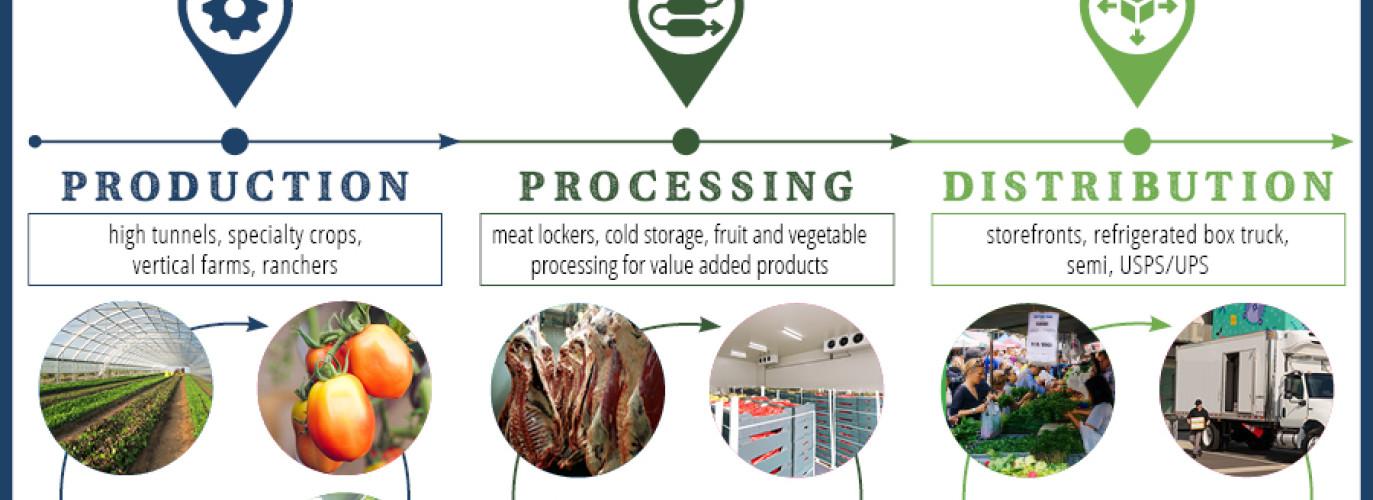Dec 08, 2023

By Rick McNary
I have been fascinated by the direct-to-consumer model of selling products from the farm since 2011. I learned the concept after asking a person at an agricultural conference to explain the sign, “A Kansas farmer feeds 155 people plus you,” since I had never purchased any food directly from a farm or ranch.
He explained how commodities like wheat are grown then often shipped out of state to be processed, then return to consumers on grocery store shelves as a loaf of bread. He then added there was rising interest from farmers in direct-to-consumer sales and consumers in purchasing local food.
Understanding how this direct-to-consumer local food model works is like putting a 1,000-piece jigsaw puzzle together with no picture to look at for reference. However, as I’ve studied, researched and learned how it works, I discover missing pieces that tie it all together and I recently discovered such a piece, oddly enough, at the Kansas Co-op Leadership Meeting.
A company from Iowa shared its work on responding to consumer demand for knowing the origin of grains in the flour they used. As they explained those principles, I understood how those same principles apply to direct-to-consumer sales on a local and regional level.
They used the term identity preservation to explain the concept of people wanting to know where their food comes from, who grows it and how it is grown. In conjunction with identity preservation, the economic concept of inelastic demand comes into play. Inelastic demand means people will pay more for a product if there is a story and well-developed brand, such as a ten-dollar cup of coffee at Starbucks.
The most critical element for identity preservation and inelastic demand to be successful is the control over the local supply chain.
There are many farmers, ranchers and growers who are already involved, or want to get involved, in selling food products but can’t because the local supply chain is either lacking in capacity or missing altogether?
Since I started Shop Kansas Farms, I’m often approached by those interested in direct-to-consumer sales, but their greatest fear is the lack of control over the processing component. To sell beef they raise, direct-to-consumer, is a three-year process that depends, in the end, on open locker dates.
At that same conference in 2011, Dr. Curt Kastner, director of food science at K-State, also explained the concept of a local food system, or a local supply chain, to me. He broke it down into three basic parts: production – the growing of a plant or animal until a maturation stage; processing – the work of taking the mature product and making it ready for human consumption; and distribution – all the elements required for that food to reach the table.
He served on a committee for the Department of Homeland Security that had great interest in establishing a local food system supply chain as resilient mechanisms in case of a terroristic threat to our global food supply system. That was long before the pandemic exposed the weaknesses of our global supply chain.
As I began engaging myself in research and application of a local food system supply chain model, I observed the opportunities that would make it work better. First, for all three parts of a local system to function well, it needed a digital hub. Second, there was an opportunity to expand existing or create new local processing businesses both of meat and produce.
By the third day after I created Shop Kansas Farms during the pandemic in April of 2020, I realized I had inadvertently created that digital hub for a local and regional supply chain.
If direct-to-consumer sales are to be successful and sustainable, it is critical a local supply chain is rebuilt or built new so people who want to know where their food comes from and are often willing to pay more for it, can purchase it from a local farm and ranch.
I have just described the Shop Kansas Farms Harvest Hub model that is a local and regional food system supply chain. Our purpose is to help a community – however they define themselves regionally like the Rice County Harvest Hub or the Border Queen Harvest Hub in Caldwell - can engage all stakeholders in their community to build and support the local supply chain necessary to ensure the success and sustainability of direct-to-consumer sales.
Our Shop Kansas Farms Harvest Hubs gives local farmers, ranchers and growers the ability to control a local supply chain so those who seek identity preservation of their food and are often willing to pay more, can find them more easily.
If you'd like to learn more, contact us today!
